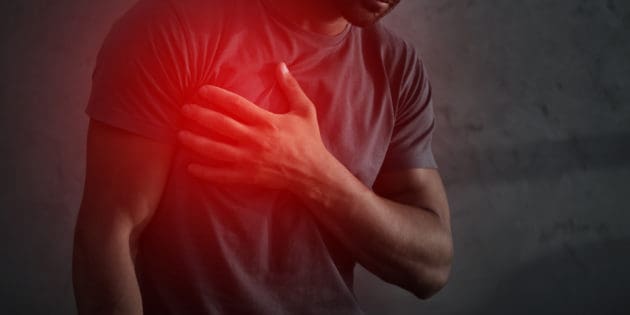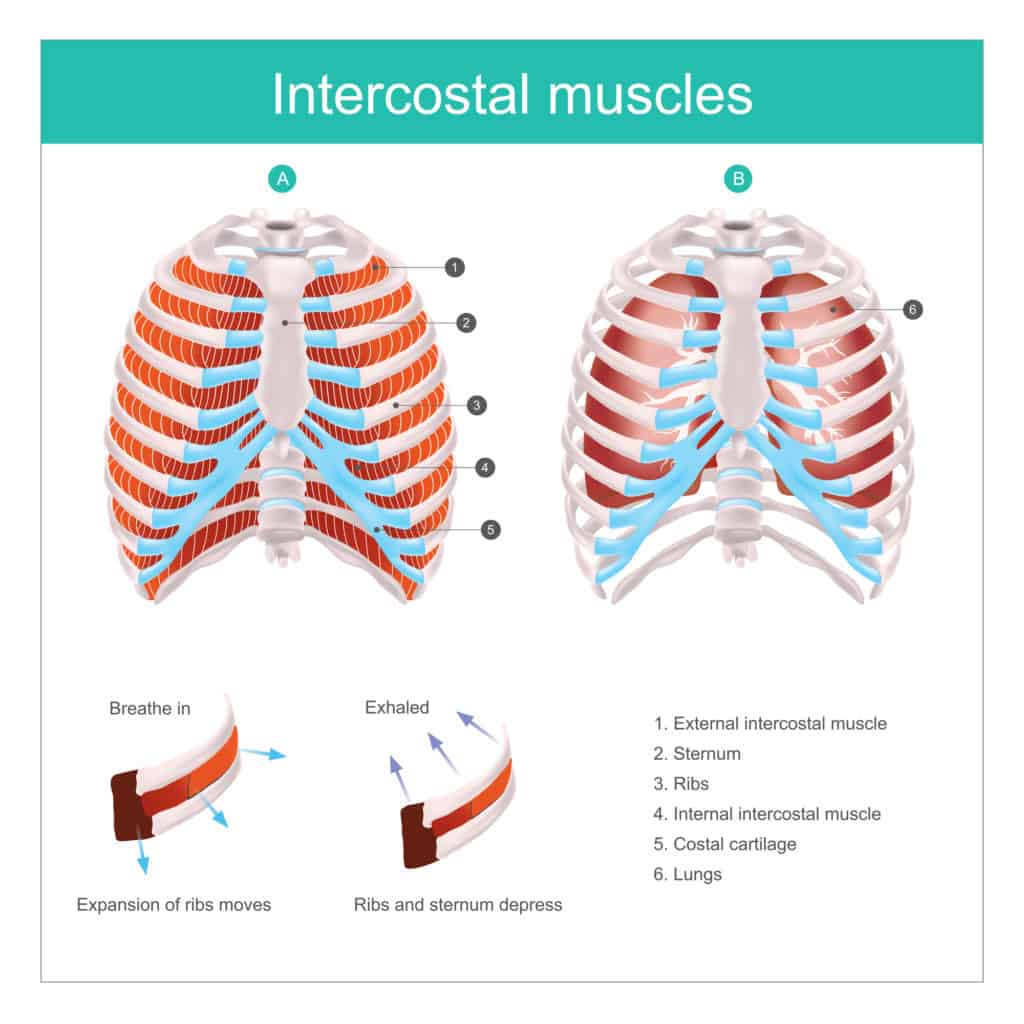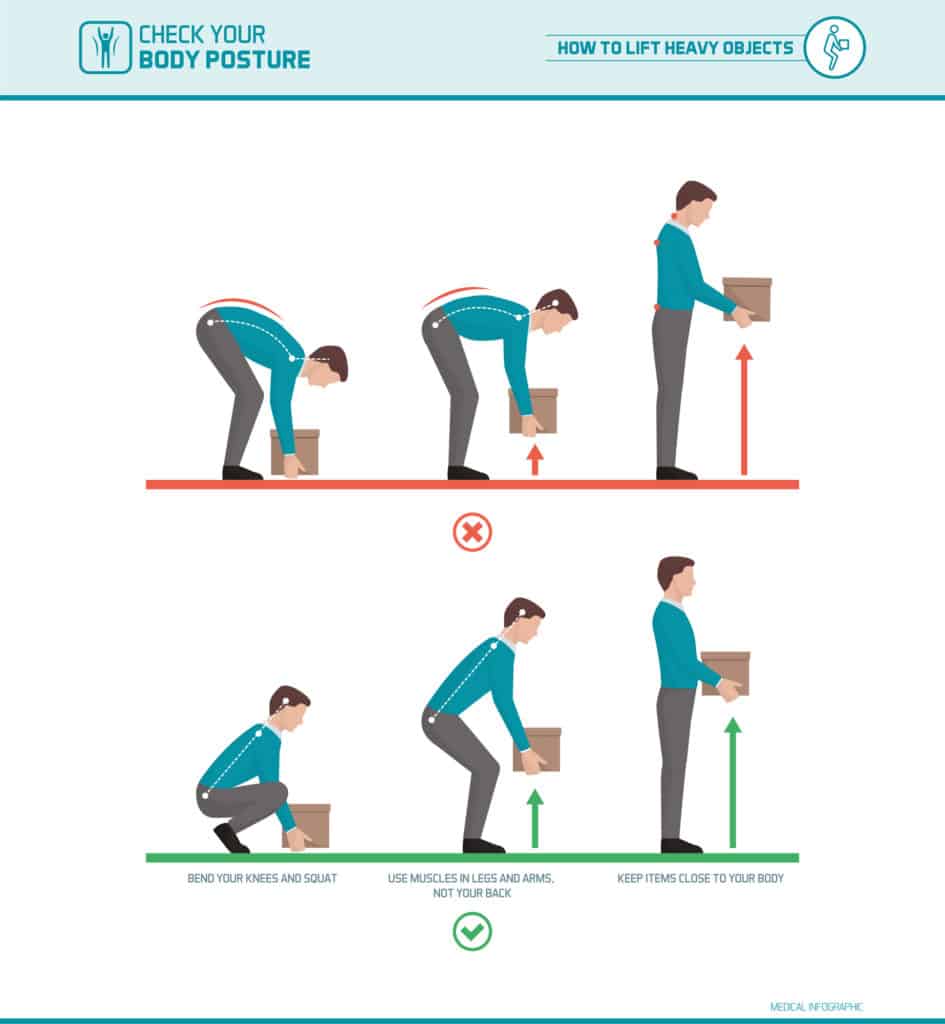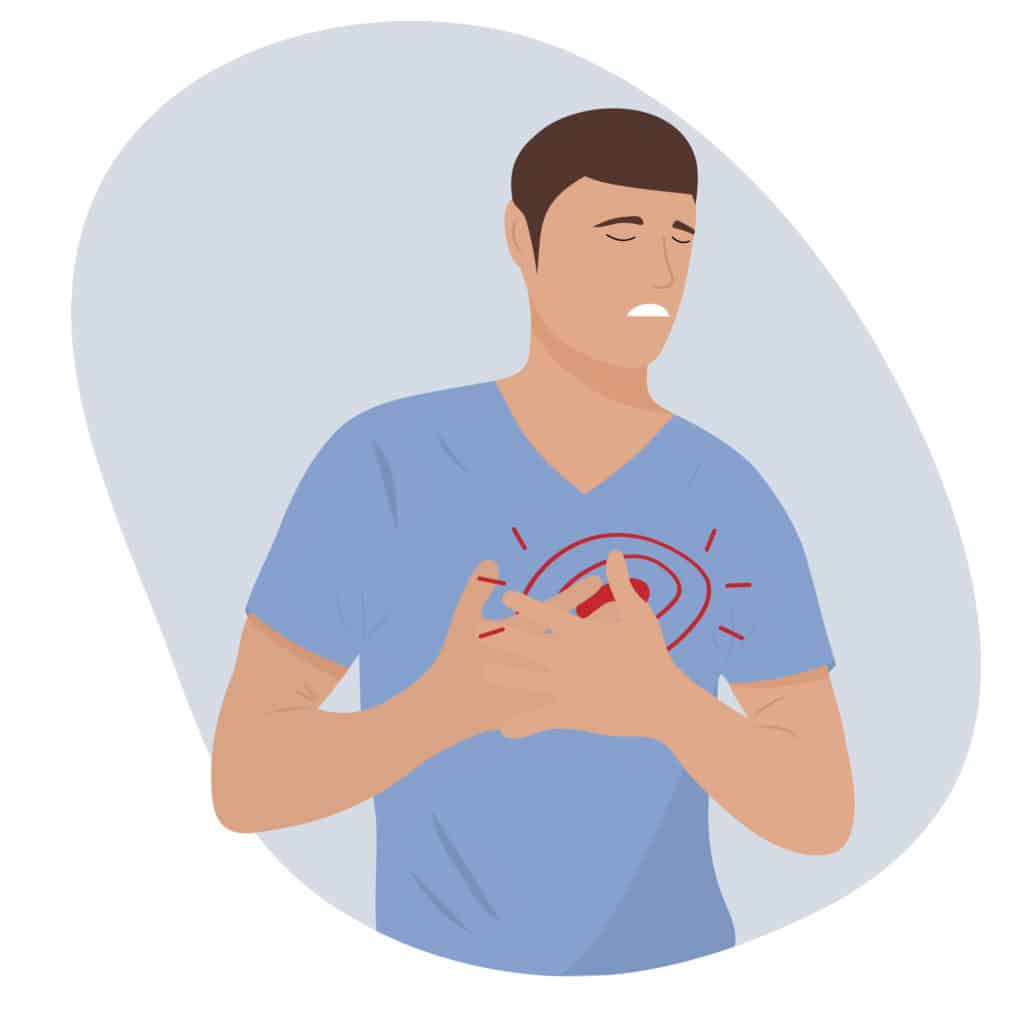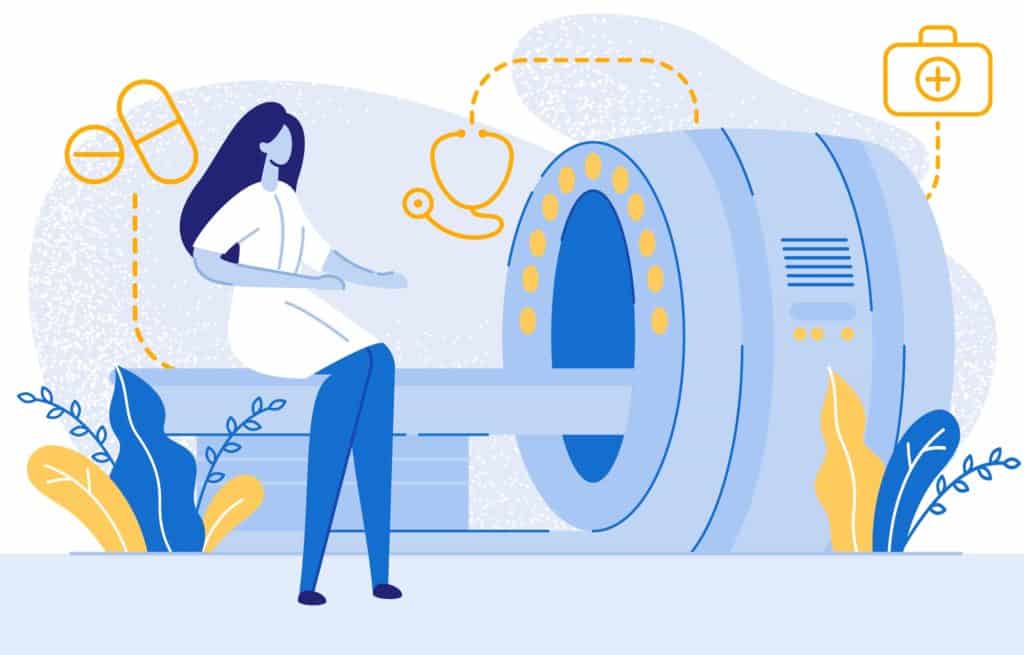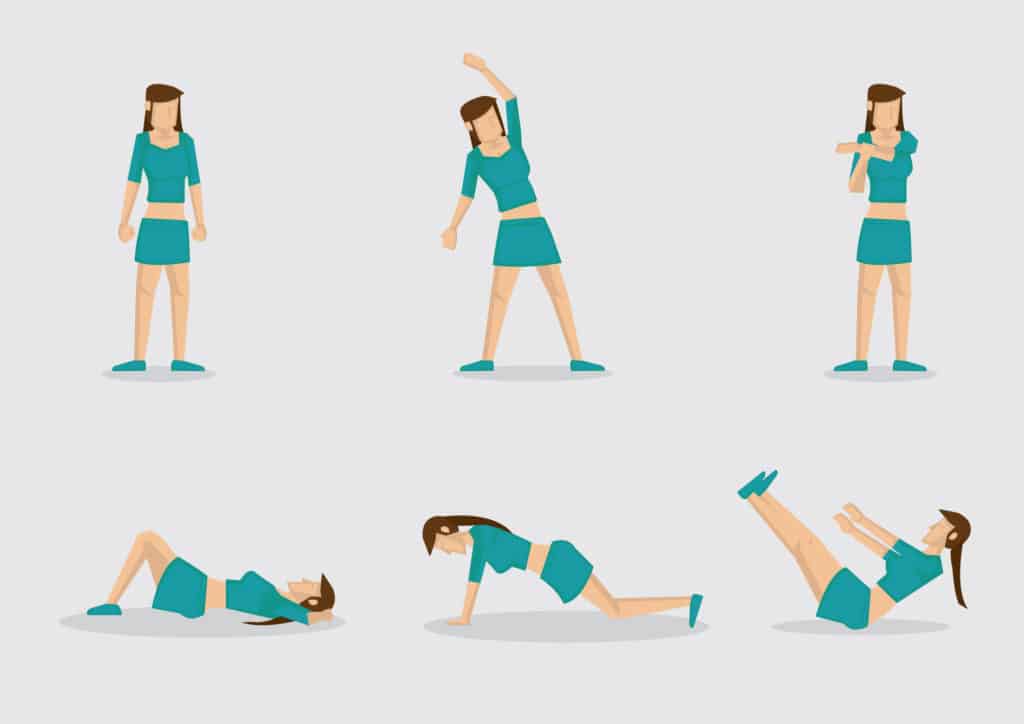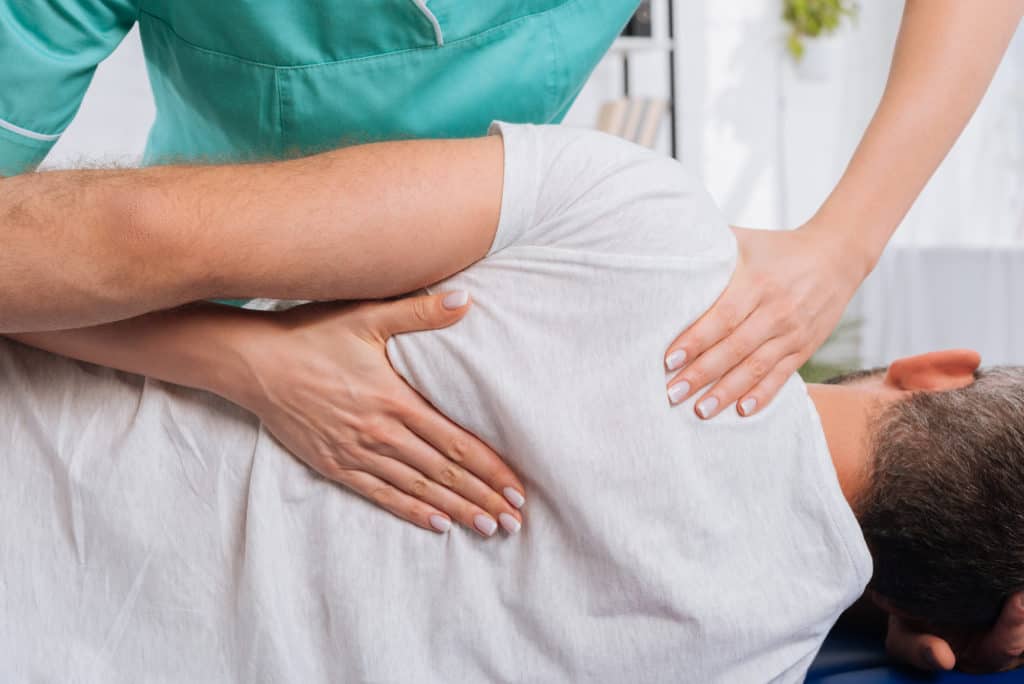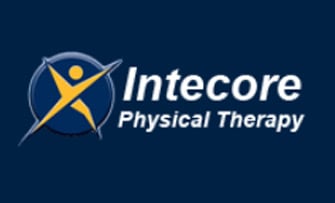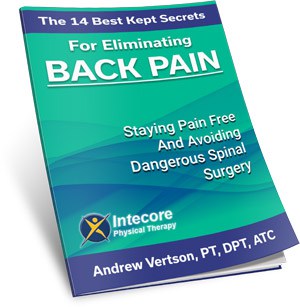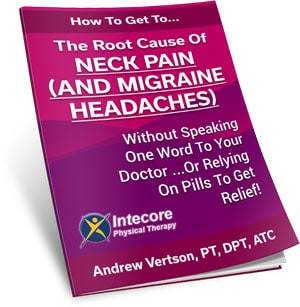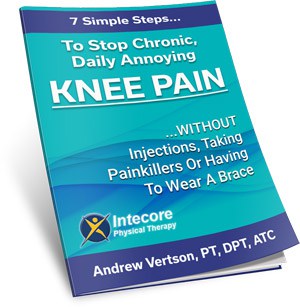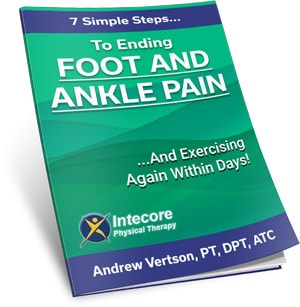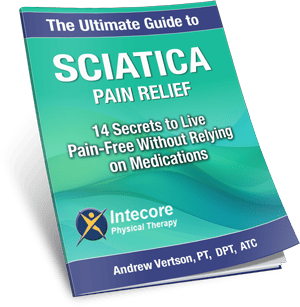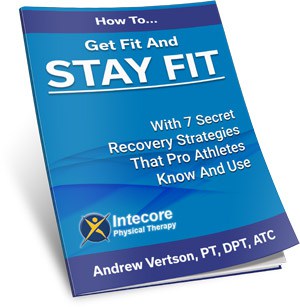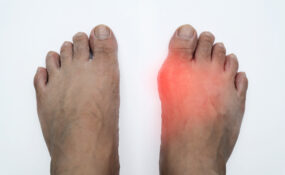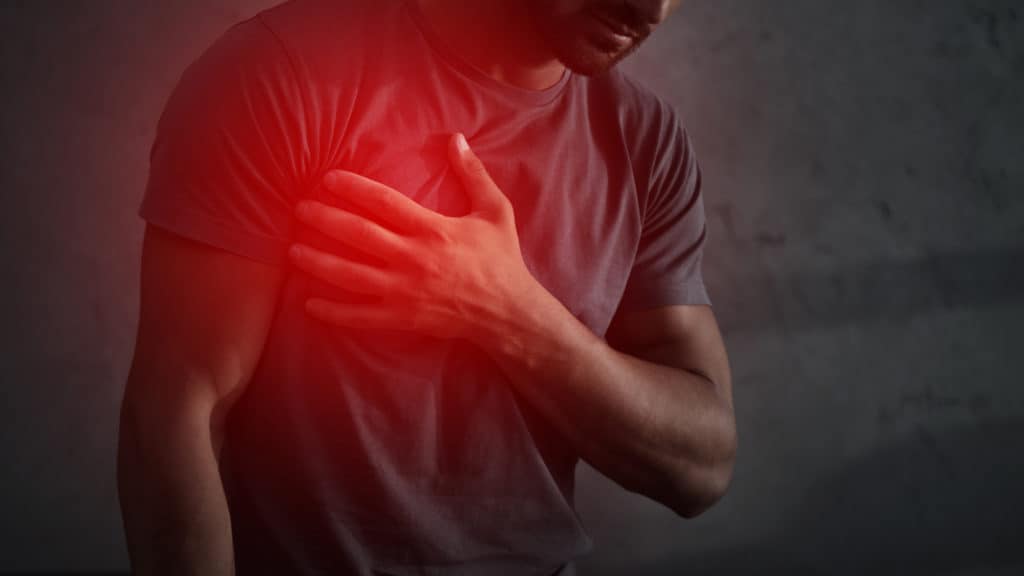
Feeling chest pain can cause no end of panic. Your first thought will naturally turn towards your heart.
Am I having a heart attack?
Now – let’s make this crystal clear. The pain of a heart attack is different to something like a pulled muscle in your chest.
Heart attack pain causes a dull ache, mated to an uncomfortable feeling of pressure in your chest. This pain begins in the center of your chest, before radiating out towards one (or both) of your arms, and down your back, neck, jaw, or into your stomach.
The pain caused by a heart attack can last for several minutes, but also fluctuates by disappearing and returning in rotation.
Other symptoms of having a heart attack include shortness of breath, nausea, lightheadedness, breaking out into a cold sweat, and being physically sick.
If any of these symptoms sound familiar, then get yourself to the emergency room. You should call 911, or a local emergency number, as a heart attack can become life-threatening.
If you don’t recognise these indications, then chances are you’ve pulled a chest muscle or caused a strain.
So don’t panic!
More Blogs From Intecore
Ongoing Shoulder Pain: What Is Causing It?
Is Cracking Your Neck Dangerous?
Tennis Elbow: What You Need To Know
What Does A Strained Chest Muscle Feel Like?
If you have strained, or pulled, a chest muscle then it can cause a sharp pain – almost like someone trying to cut their way out from beneath your skin.
This unpleasant sensation is caused when your chest muscle is torn or stretched. Nearly 50% of this discomfort comes from what’s known as ‘intercostal muscle strain’; the three layers of intercostal muscles within your chest.
These muscles are what help keep you breathing, and also help to stabilize the upper part of your torso.
The most common symptoms of chest muscle strain (besides sharp pain) include muscle spasms, swelling, an acute ‘pull’ feeling or chronic strain, extensive areas of bruising, difficulty in moving the affected muscles, and soreness when taking deeper breaths.
If this chest pain comes on very suddenly when undertaking strenuous activity or exercise, we’d advise that you seek medical attention.
Furthermore, if you feel any degree of dizziness, difficulty breathing, or an increased pulse, please seek emergency medical attention.
The same goes for any sudden fevers, inability to stay awake, irritability, excessive sweating, or fainting – as these could indicate an imminent heart attack.
What Causes This Chest Pain?
Pulling, tearing, damaging, or straining the wall of your chest occurs most commonly as a result of overuse.
Lifted something heavy lately, but in an incorrect fashion?
Pushed yourself too hard when playing sports?
Tried to show off when rowing, playing tennis, or strutting upon the golf course?
Chances are that you’ve gone overboard with repetitive motions that cause chronic strains.
Especially if you’ve skipped the necessary warm-ups before engaging with activity, as poor flexibility when conditioning for athletic behavior can cause serious issues.
Of course, it’s not just extracurricular activities that can cause damage to the chest wall. You are at higher risk should your employment involve heavy-lifting work, or prolonged periods where your arms are lifted above your head.
Then there’s the aftermath of an accident, which can cause chest ramifications. If you have suffered a contact injury from sports, been in a car accident, fallen from more than standing height, or been affected by malfunctioning gym equipment, then your chest may have taken the brunt.
Certain illnesses can also place pressure on, and strain, your chest (such as bronchitis or COVID-19). When enduring an illness, it becomes possible to pull your chest muscle when coughing.
Medical experts attest to anxiety attacks, peptic ulcers, or digestive upsets (such as esophageal reflux), alongside pericarditis, as further causes of chest pain.
Whereas more serious possibilities are touted as angina (reduced blood flow to the heart), pulmonary embolism (blood clot in the lung’s pulmonary artery), or a tear in your aorta.
Your doctor will run tests to rule these more serious conditions out.
Who Is At Risk?
Anyone can experience chest pain. Nobody is immune, but some of us are more at risk.
As with any physical condition, older persons remain at higher risk of experiencing chest wall injuries. Especially from the likes of a fall or overuse during activity.
The more active you are, then the more likely a chest strain becomes. Being a couch potato won’t save you, though. If your muscles are fatigued or underdeveloped, you can easily pull a chest muscle, too.
Feeling concerned about your chest wall pain, or remain unsure whether it’s a pulled muscle or something more sinister? You need to go and speak with your doctor.
If it’s diagnosed as your chest wall muscles, and your MD sends you to a physical therapist, then you’ve got a doctor who understands. Which is great! Of course, you can always self refer to a physical therapist, too.
How Severe Is Your Chest Muscle Pain?
Once you’ve been diagnosed by your MD, and also a physical therapist, your muscle strain will be categorized as either chronic or acute.
Chronic strains usually stem from longer-term activities (such as repetitive motions in your job or on the sports field), whereas acute strains result from muscle trauma sustained after immediate and direct injury; usually from an auto accident or a fall.
Once that’s been established, the strain is then graded depending on the severity of your condition. This grade works on a three-tier scale, where Grade 1 refers to mild damage, and Grade 3 covers complete muscle rupture.
If you are placed in Grade 1, then you have caused damage to less than 5% of the chest wall’s muscle fibers.
Grade 2 generally indicates that more damage has been done, and there is a distinct loss of mobility and strength, but the muscle has not ruptured.
Grade 3 is reserved for those who rupture their muscle completely. In the worst-case scenarios, Grade 3 can require surgery.
As a footnote – don’t panic if your doctor instructs you to undergo testing to rule out bone fractures and heart/lung problems. These tests may include an MRI scan (magnetic resonance imaging), an X-ray, or an ESG (electrocardiogram).
Treatment For Chest Wall Pain
Can you treat chest wall pain at home?
As a first-line response for mild chest pain, you certainly can – courtesy of RICE.
Yes, RICE. Except, rather than eating the food (always delicious in a risotto), the acronym stands for:
- Rest. Stop activity as soon as you notice pain.
- Ice. Apply ice or a cold pack to the affected area for 20 minutes (up to three times per day).
- Compression. Consider wrapping any areas of inflammation with an elastic bandage but don’t wrap too tightly as it may impair circulation.
- Elevation. Keep your chest elevated, especially at night. Sleeping in a recliner may help.
By following the RICE plan, mild symptoms should ease in a matter of weeks. You can also take over-the-counter pain relief to reduce levels of discomfort in your chest – ibuprofen or acetaminophen (Tylenol) – but it’s best not to depend on these pills.
Painkillers only mask the problem, they do not solve it. That’s where physical therapy comes in.
Physical therapy utilizes bespoke exercises to address improper muscle balances that contribute (or cause a relapse) toward chest strain.
Of course, when we say ‘bespoke’ exercises, we mean that they are unique to you. What works for some may not work for others, which is why we take the time to get to know you, and understand your exact situation.
Instead of generalizing your condition, we prefer to tailor your personal care package towards effective results that get you back to health quickly and safely. You can contact us for more information.
How Long Does Recovery Take?
This very much depends on the severity of your condition. A mild strain can repair and heal as quickly as a fortnight after injury.
However, more serious injuries can take months to properly heal. If you need to undergo a surgical procedure, then you should factor in some realistic recovery times for that, too.
Can You Prevent Chest Wall Muscle Strain?
While you can never make yourself immune to chest wall pain, there are some helpful tips that you can follow to ensure your risk remains low.
Always warm-up before partaking in sporting activity, and remember to cool down and stretch appropriately afterwards.
If you struggle with balance, take extra care when involved with physical activity. When on the move, use handrails when traveling up and down stairs.
Try to avoid unbalanced and difficult surfaces, and always ensure you are using appropriate footwear.
Take days off from exercise when necessary. You need to listen to your body, as tired muscles are more susceptible to strain.
Seek help from others when lifting heavy objects. You may feel like Rambo going into a task with gusto, but you’ll damage yourself. If you are carrying heavy items in a backpack, use both your shoulders, rather than only one side.
Reach Out To Us
If you have suffered a chest wall strain, then we can help you.
Reach out through our contact page to enquire about cost and availability.
We are here to help you get back on your feet. Don’t suffer in silence!
- What Is Gout? Why It Happens and What You Can Do About It - November 17, 2025
- Are You Experiencing Shoulder Pain from Sleeping Wrong? - October 21, 2025
- How Many Hours of Sleep Do You Need for Recovery and Injury Prevention? - September 8, 2025

